Blog
- Details
- Hits: 12308
JULBLOG.
Politics.
Io Bojo! Boris Johnston becomes our new leader, in our darkest hour for some time.
If we fail to separate this Nation from the EU decisively and soon, we shall become assimilated into the undemocratic bureaucratic EU synarchy forever.
Cometh the hour, cometh the man?
Let us hope so, Boris has studied Churchill and written a book about him.
Boris will need to make some bold strokes fast. A deal with Nigel Farage and a general election in which the conservative constituency parties have deselected all the remain traitors could just alter the parliamentary arithmetic in time for a clean break with the ghastly political project of the EU by Halloween.
Boris, Trump, and Brexit all form part of the great culture war which rages partly in response to globalisation.
For the last few decades the political consensus of the west has moved increasingly towards cultural leftism and economic rightism. Hyper-liberal political correctness and economic inequality have grown to offensive levels and the peasants have started to revolt.
The fightback to a rather more cultural rightness and a rather more economic leftness has begun. It won’t go as far as full National Socialism unless it becomes thwarted.
Your average Revolting Peasant in the west wants less multiculturism and more effort expended on its own culture. It doesn’t want LGBT behaviour actively promoted as normal and acceptable to its schoolchildren. It doesn’t want the absurdities of political correctness enforced by law and punishment.
Your average Revolting Peasant in the west doesn’t want the deregulated capitalism that outsources its manufacturing to the lowest bidder, migrant or third world, and then offers downmarket service work instead of proper employment.
Your average Revolting Peasant would prefer to celebrate the history of the Nation rather than have liberal cultural lefties continually try to find the worst in it to recruit supporters through a sense of fake victimhood.
The UK Labour and Illiberal Dimocrat parties seem dominated by a clique of cultural ultra-leftists. The UK Conservative party still nurses too many vested interests in deregulated capitalism.
At the Brexit vote more than half the electorate basically said this country has become fairly shite and we don’t like the way it’s going.
With Brexit we can Make Britain Pretty Good Again.
Physics. Corrections and updates to Hypersphere Cosmology: -
GM/L2 = c2/2L = A/2. v2 = 2dA/2 = dA. In the Pioneer Anomaly, measured decelleration = A/2.
p - photon momentum.
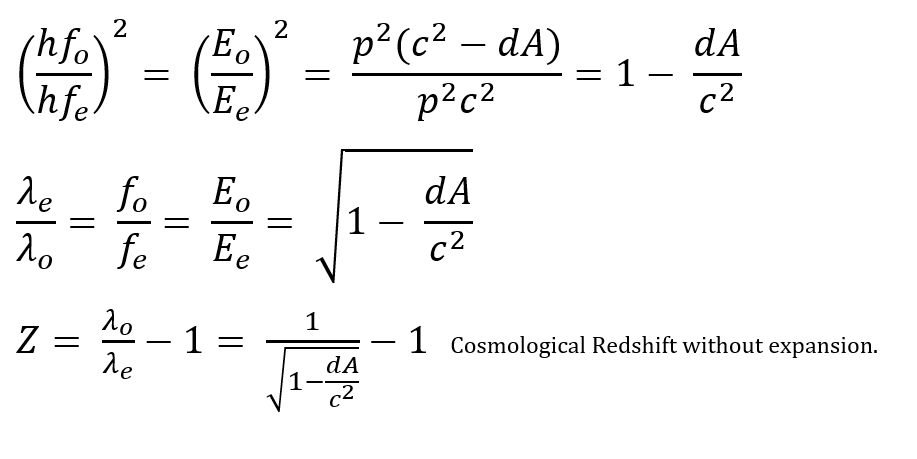
HC now becomes fully compatible with both SR and GR. The effects of Acceleration and Gravity become exactly Equivalent.
Magic.

Retirement from trading has brought me time and leisure, so I thought to fashion the ultimate swiss-army multitool of a magical instrument:
Herewith the Mk127 Purba. Pearwood grown in my own gardens (sadly the wind took the tree over a while ago). Sigils of the Elder Gods on one end, Sigils of the Eight Colours of Magic in the middle, Sigils of the conjurations of Enchantment, Divination, Evocation, and Invocation on the other, Chaos Star to follow.
- Details
- Hits: 12237
Some recent correspondences seem to have led to some thoughts perhaps worth noting for posterity in an extended ramble: -
Hippy or Punk?
I spent my formative years on the late hippy scene, 1974-1980. Subcultural trends in the UK tended to run on social class, the hippies mostly came from the upper middle and middle classes (I came from the upper working class but going to university promoted me to lower middle class). Hippy-ism had a strong mystical component and a relaxed attitude to material success because the economy had plenty of slack in it at the time. The Punk movement came later, mostly from the upper working class and the middle working class, and it seemed angrier and more violent, partly because of social and political conditions at the time, views had become polarised and economic life had become more competitive. Thank Margaret Thatcher.
The antinomianism of Chaos Magic did attract a fair bit of interest from the Punk generation, though - they liked its rebelliousness.
Looking back, I now realise that the part of traditional occultism I rejected in forging Chaos Magic comes down to one main thing - Neoplatonism, and I rejected that because of my scientific education. I don't find the theory of earth, air, fire, and water useful, and I don't believe that gods and entities exist independently of the human mind, however I do believe in the psychological and parapsychological power of intent and imagination. Thus, we can make gods and demons to assist and serve us. I attempted to supplant the Neoplatonic-Pagan-Monotheism which had underpinned occult thinking for two millennia with a Quantum-Neo-Paganism.
Chaos magic also developed by defining itself as against Crowley and Thelema. We can do better I proclaimed, (but few of them did).
I would agree with the observation, that you need to keep your feet on the ground with a well-crafted Solar persona whilst pursuing the Ouranian quest. I never gave up on the day career and 'normal' life; or on the weird quest either. I think that benefited both.
Conservative or Radical?
The enlightenment and radicalism of the age become the oppression and conservatism of the next age.
Now history happens so fast, and people live so long, that this can happen twice in a single lifetime.
(Social liberalism and political correctness went toxic and authoritarian in my own lifetime, vociferous minorities now seem to set the culture war agenda.)
They used to say that human progress happens one funeral at a time.
Today your ideas can die before you do.
Consequently, I have given up following fashions in ideas and in science, art, and morality.
Does that make me a conservative or a radical?
‘Orthodox Chaoism’ now dominates all magical thinking in the westernised world, its influence seems pervasive, the remaining pockets of Neoplatonism seem untenable. I don’t deserve all the credit for this, I saw the way the wind blew and simply hoisted more sail and puffed into it. I don’t feel the need to promote or defend Chaos Magic further although I use it constantly. According to Aeonic Theory it will remain the prime esoteric paradigm until something of a yet barely imagined transcendentalist way of thinking supersedes it. (Some form of mystical ecology might do just that.)
For the remaining part of this incarnation I have two esoteric quests, to replace the conventional cosmological model of a big-bang origin for this universe with something more credible that better fits the unadulterated observational data (like Hypersphere Cosmology, in progress), and also to make some sense of the quantum and particle domain underlying reality, using perhaps 3D time (progress slow, I may not live long enough to finish this).
I find the apocalypticism of the current scientific creation myth as metaphysically unsatisfactory as the apparent lack of an underlying reality in the quantum domain.
I seem to have become an esoteric conservative and a scientific radical, with leanings towards social conservatism as I observe the increasing social decay in my environment. Whilst the upper echelons and intelligentsia of western societies could usually cope with some indulgences in recreational sex and drugs, the effect on the lower orders and the ignorati appears increasingly catastrophic.
Racist or Culturalist?
Humans tend to adopt the culture that nurtures them because our high intelligence also brings with it a hyper-suggestibility. We tend to end up believing what we do rather than doing what we believe. Politicians and priests have always known this, make people do something or make people use some form of thought-speak and their beliefs will follow sheepishly behind.
Personally, I do make value judgements about cultures; some religions and polities do seem to spawn quite ghastly, ignorant, and inhuman behaviour, irrespective of the ethnicities involved.
So does the following assertion count as racist or culturalist?
Yes, I have encountered many people who find working for German bosses odious - one of the reasons I think we should exit the EU before we all end up working for them!
Alternative Physics.
The further we investigate the recent history of cosmology the more apparent it becomes that the baroque mess of the currently dominant Lambda-CDM model has its roots in assumptions made back around AD 1930. Today it has become difficult to even find observational data that hasn’t undergone deformation by the expansion hypothesis before presentation.
A extract of Hypersphere Cosmology in progress follows, Section 9 which shows an upgrade to the hyperspherical lensing which eliminates dark energy (Lambda).

- Details
- Hits: 11913
Some recent correspondences seem to have led to some thoughts perhaps worth noting for posterity in an extended ramble: -
Hippy or Punk?
I spent my formative years on the late hippy scene, 1974-1980. Subcultural trends in the UK tended to run on social class, the hippies mostly came from the upper middle and middle classes (I came from the upper working class but going to university promoted me to lower middle class). Hippy-ism had a strong mystical component and a relaxed attitude to material success because the economy had plenty of slack in it at the time. The Punk movement came later, mostly from the upper working class and the middle working class, and it seemed angrier and more violent, partly because of social and political conditions at the time, views had become polarised and economic life had become more competitive. Thank Margaret Thatcher.
The antinomianism of Chaos Magic did attract a fair bit of interest from the Punk generation, though - they liked its rebelliousness.
Looking back, I now realise that the part of traditional occultism I rejected in forging Chaos Magic comes down to one main thing - Neoplatonism, and I rejected that because of my scientific education. I don't find the theory of earth, air, fire, and water useful, and I don't believe that gods and entities exist independently of the human mind, however I do believe in the psychological and parapsychological power of intent and imagination. Thus, we can make gods and demons to assist and serve us. I attempted to supplant the Neoplatonic-Pagan-Monotheism which had underpinned occult thinking for two millennia with a Quantum-Neo-Paganism.
Chaos magic also developed by defining itself as against Crowley and Thelema. We can do better I proclaimed, (but few of them did).
I would agree with the observation, that you need to keep your feet on the ground with a well-crafted Solar persona whilst pursuing the Ouranian quest. I never gave up on the day career and 'normal' life; or on the weird quest either. I think that benefited both.
Conservative or Radical?
The enlightenment and radicalism of the age become the oppression and conservatism of the next age.
Now history happens so fast, and people live so long, that this can happen twice in a single lifetime.
(Social liberalism and political correctness went toxic and authoritarian in my own lifetime, vociferous minorities now seem to set the culture war agenda.)
They used to say that human progress happens one funeral at a time.
Today your ideas can die before you do.
Consequently, I have given up following fashions in ideas and in science, art, and morality.
Does that make me a conservative or a radical?
‘Orthodox Chaoism’ now dominates all magical thinking in the westernised world, its influence seems pervasive, the remaining pockets of Neoplatonism seem untenable. I don’t deserve all the credit for this, I saw the way the wind blew and simply hoisted more sail and puffed into it. I don’t feel the need to promote or defend Chaos Magic further although I use it constantly. According to Aeonic Theory it will remain the prime esoteric paradigm until something of a yet barely imagined transcendentalist way of thinking supersedes it. (Some form of mystical ecology might do just that.)
For the remaining part of this incarnation I have two esoteric quests, to replace the conventional cosmological model of a big-bang origin for this universe with something more credible that better fits the unadulterated observational data (like Hypersphere Cosmology, in progress), and also to make some sense of the quantum and particle domain underlying reality, using perhaps 3D time (progress slow, I may not live long enough to finish this).
I find the apocalypticism of the current scientific creation myth as metaphysically unsatisfactory as the apparent lack of an underlying reality in the quantum domain.
I seem to have become an esoteric conservative and a scientific radical, with leanings towards social conservatism as I observe the increasing social decay in my environment. Whilst the upper echelons and intelligentsia of western societies could usually cope with some indulgences in recreational sex and drugs, the effect on the lower orders and the ignorati appears increasingly catastrophic.
Racist or Culturalist?
Humans tend to adopt the culture that nurtures them because our high intelligence also brings with it a hyper-suggestibility. We tend to end up believing what we do rather than doing what we believe. Politicians and priests have always known this, make people do something or make people use some form of thought-speak and their beliefs will follow sheepishly behind.
Personally, I do make value judgements about cultures; some religions and polities do seem to spawn quite ghastly, ignorant, and inhuman behaviour, irrespective of the ethnicities involved.
So does the following assertion count as racist or culturalist?
Yes, I have encountered many people who find working for German bosses odious - one of the reasons I think we should exit the EU before we all end up working for them!
Alternative Physics.
The further we investigate the recent history of cosmology the more apparent it becomes that the baroque mess of the currently dominant Lambda-CDM model has its roots in assumptions made back around AD 1930. Today it has become difficult to even find observational data that hasn’t undergone deformation by the expansion hypothesis before presentation.
A extract of Hypersphere Cosmology in progress follows, Section 9 which shows an upgrade to the hyperspherical lensing which eliminates dark energy (Lambda).

- Details
- Hits: 12206
Politics.
Several pundits predicted that having made the mistake of allowing the British people a referendum on EU membership and losing it, the UK Political Establishment would find some way of not actually allowing Brexit to happen.
So far, they have succeeded in this by presenting either a very bad Not-Really-Leave-At-All-Deal, or an allegedly catastrophic No-Deal departure as the only possible options.
However, their own rules have now caught up with them and we now face another round of elections to the EU’s sham-parliament, a body which neither raises nor spends taxes and which cannot initiate legislation, it can only rubber stamp the diktats of the unelected EU commission and its self-selected bureaucrats.
Voting in elections has something of a magical gesture about it, as the likelihood of any individual vote affecting the outcome remains vanishingly small, yet it nevertheless registers as an act that projects intent.
Thus, I shall ‘Tell Them Again!’ and vote for the Brexit Party because: -
I prefer Democracy to the unelected autocracy and malignant synarchy of the EU.
I prefer British Common Law and the presumption of innocence to the dodgy continental version.
I prefer that Britain adopts its own response to the multiple crises arising from Globalisation rather than accept the diktats of Brussels and Berlin.
I prefer that Britain distances itself from the institutionalised corruption of an EU whose accounts have invariably failed to pass audit. In the UK, people would have gone to jail for this, in the EU they get gold-plated pensions instead.
‘No-Deal and F* Off’ will certainly bring temporary hardships, but freedom always has its short-term costs.
Reluctant-Remainers should also seriously consider voting for the Brexit Party because a very large cohort of MEPs opposed to the Political side of the EU project seems likely to become elected across the whole EU. Just possibly this could lead to the EU reverting to its original function as a body for economic cooperation and nothing more. In which case ‘Remaining’ might well prove acceptable to almost everyone.
Either way we should not remain part of the Malignant Political Monstrosity that the EU has mutated into.
Cosmology
Collaboration with my Gama-Ray Astronomer friend has provided a very lively debate about many aspects of Hypersphere Cosmology. Currently we mainly explore the hyperspherical lensing that creates the optical illusion of an accelerating expansion of the universe and gives rise to the dodgy phlogiston hypothesis of dark energy. The previous blog on The Hyperspherical Lensing of a Glome in Azimuthal Projection may not give a sufficiently accurate projection and may soon receive a trigonometric upgrade.
Meanwhile the physical principles and equation that gets rid of the underlying mistaken assumption that the universe expands at all (and hence came from a singularity and a big bang), have undergone a simplification and a clarification. See below for a description of cosmological redshift (the main evidence for the expansion hypothesis) in terms of the small positive spacetime curvature of a Glome type hypersphere removing energy from photons in transit.
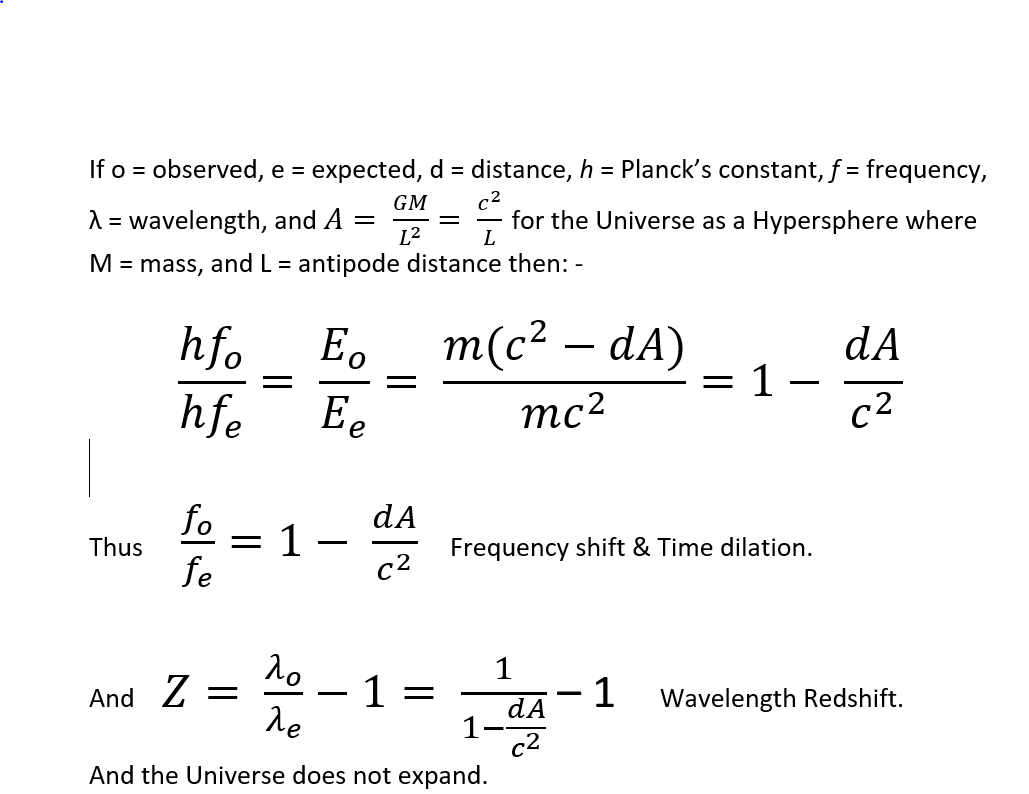
Global Warming.
Do I worry about this? Not at all. By the end of this century only a few hundred thousand humans will remain, and they won’t have any technology left after crop failures lead to a general collapse of civilisation. The planet will reforest itself nicely within a few centuries.

Maillard Reaction Alchemical Furnace – or - Pizza Oven
Not an ideal survivalist structure, nor a particularly efficient method of cooking, but the woodsmoke does impart a delightful tang.
Brick tunnel built over half a plastic barrel (remove barrel before bricking up ends!!!) old Victorian waterpipe as chimney, door in cast concrete.
- Details
- Hits: 13278
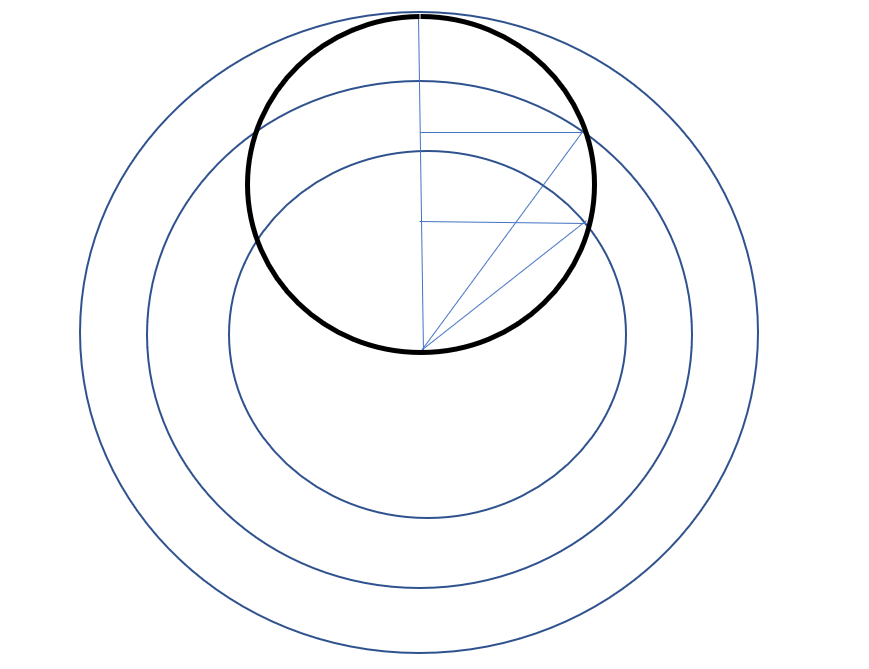
Heavy Circle = Hypersphere (Glome), Lighter Circles = Azimuthal Circles
Vertical Line from centre = Glome antipode distance L, let d = astronomical distance/L.
Horizontals = Glome radii = sqrt(d-d^2)
Hypotenuses = Azimuthal radii = = sqrt(d^2 + (d -d^2))
*Hypotenuses/Horizontals = sqrt(d^2 + (d-d^2)) /sqrt(d-d^2)
*This ratio submits to the following simplification

or to
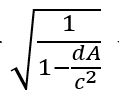
where d now means simply the astronomical distance, as A = c^2/L.
Dividing the two gives the ratio of Azimuthal radius to internal Glome radius so the ‘Lensing’ shown means the degree to which the object under observation at some distance d/L gets ‘spread out’, suggesting that we could multiply this by the standard factor for reduction of brightness with distance of 4pir^2
Explanation: Glomes (3-spheres or 4-balls) have an unobservable 4th dimensional radius of curvature.
The vertical axis represents the real distance to L, but along it every point d on it has a corresponding point on the unobservable 4th dimension axis corresponding to sqrt(d-d^2) for its unobservable radius of 4th dimensional Glome curvature, and to sqrt(d^2 +(d-d^2)) for its unobservable radius of 4th dimensional Azimuthal curvature.
The ratio of these unobservable sqrt(d^2 +(d-d^2)) / sqrt(d-d^2), gives a third unobservable sqrt(1/(1-d)), which we can render into an observable by multiplying it by the expected drop off in brightness for distance d.
Prediction: The curve begins with a gentle almost flat slope, and this looks, the same as the results obtained for the type 1A supernovae. On the basis of the angle of the slope the Hubble constant became adjusted and the assumption of dark energy became adopted.
However, we cannot easily observe type 1As at huge distances, and the curve turns from a gentle slope into a steep curve at huge distances.
This hypothesis therefore predicts that at huge distances the dimming will become much more acute and that dark energy does not exist.

Horizontal scale distance, Observer to antipode L.
Vertical scale, for red and blue lines, the unobservable 4th dimension of curvature radius. Green = hyperspherical lensing, corresponding to the increasing observed magnitude with distance d.
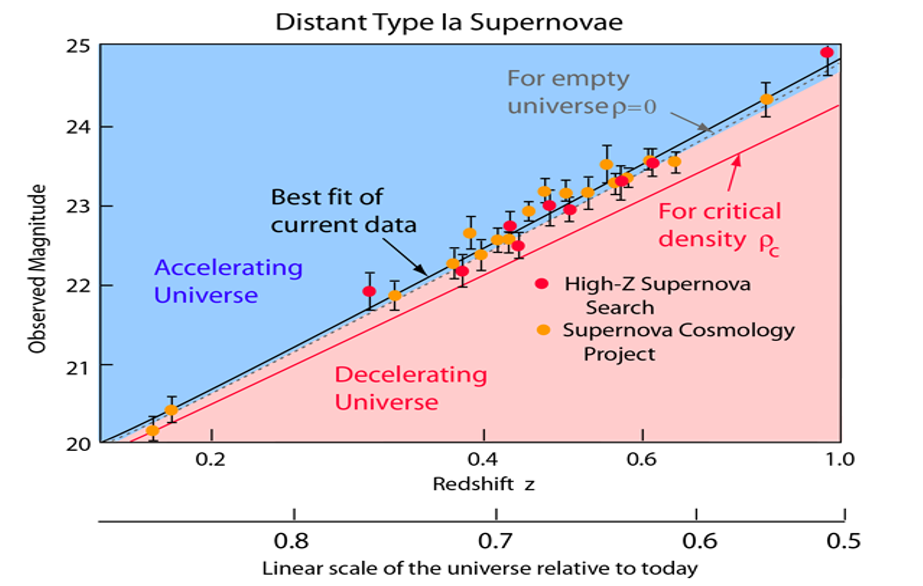
Interpretation: This hypothesis forms part of the Hypersphere Cosmology hypothesis which models the universe as a Vorticitating (4-rotating) Hypersphere (Glome) which will appear to inside observers in Azimuthal Projection. This hypothesis also eliminates singularities, the big bang, inflation, and dark matter.
The treatment of gravity / spacetime curvature as a 4th dimension orthogonal to three-dimensional space and to time implies the non-quantisation of gravity and suggests that unification may lie in the geometrication of the quanta, perhaps in higher dimensions.